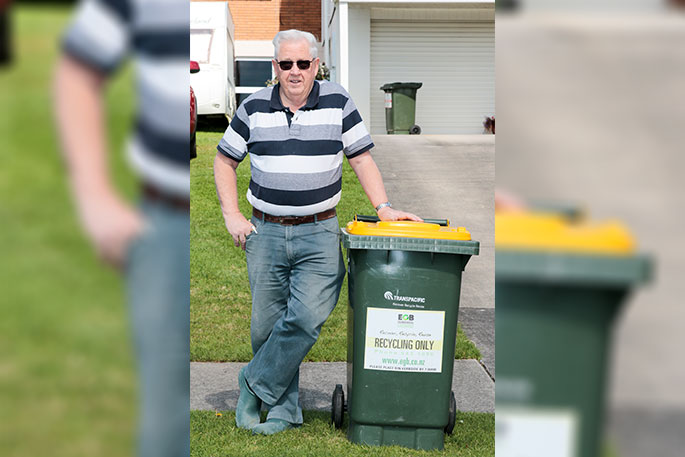It fixed the 'disjointed and inefficient” rubbish collection system that bedeviled the North Sydney Shire of Hornsby. And Tauranga man Bruce Adams says it could fix Tauranga's problems.
'Exactly the same issues for both,” says Bruce of Hairini. He's talking duplication of services, low levels of recycling and high rubbish disposal costs for consumers.
'I'm concerned about God's planet and how we look after it. And I don't think we are doing a very good job,” says the retired electronics engineer who studied divinity in Sydney and became a church pastor.
'Hornsby council took control of the problem, showed some leadership,” says Bruce who lived in the Hornsby shire for 15 years. Basically the shire rated households into a more responsible environmental attitude.
'One day we got a letter from council saying this is what we're going to do – implement an annual rate per household to deal with the rubbish-recycle problem once and for all.”
And each householder was given three bins – a red one for landfill rubbish collected weekly, a yellow bin for recycling, collected every second week and a green bin for compostable waste, food scraps and garden waste, collected alternate weeks between yellow bin collections.
Bins are only put out if more than half full. And on any one week, only two trucks visit a street.
'Fully-automated trucks are used,” says Bruce. 'So it's a fast, efficient and safe system and the driver doesn't have to leave the cab. Most importantly, every household has been encouraged to recycle and deal with compostable waste. And there are no bags.”
Bruce is putting up the Hornsby strategy as a possible solution to Tauranga's problems after ferreting through his neighbour's rubbish in Wickham Place – figuratively speaking - not scavenging but researching.
He's concerned watching at least seven different rubbish and recycling company trucks plying their business in his small cul-de-sac each week, each collecting its own waste and recycle bins or bags.
'Not only is this a huge overkill for just 50 households who occupy this street, it is hugely inefficient.” And he made it his business to also do some counting and make some observations.
Of the approximately 50 households in Wickham Place, Hairini, six use JR Richards, two use Kleena Bins and five use Enviro Green Bins. One resident burns all their rubbish. Ten households have yellow recycling bins, two have green waste bins and the rest use special issue black plastic bags – averaging 10 a week.
'I look at the bags – people put everything into the bags. People tell me they do that.”
Then to gather all that garbage, seven trucks visit Wickham Place one week, and three the next. And from those figures he says it can be safely assumed that fewer than 25 per cent of households are recycling. 'That doesn't take into account those who take their recyclables directly to the transfer station – but I would think not many.”
Steve Morris is the chair of Tauranga City Council's environment committee – the politician charged with sorting the city's rubbish problems. He's well aware of the issues and says Bruce is spot on. 'His observations are repeated in every street across the city.”
Steve says as well as the kerbside rubbish, the high amount of construction and trade waste is also of concern. 'We are presently working up some options for the community to consider next year, including a rates-funded service.” Maybe the North Sydney shire of Hornsby plan.
Then we pay for all those trucks to cart the rubbish over the Kaimai range to a landfill – 78 trucks a week. 'Why aren't we dealing with our rubbish here?” says Bruce Adams. 'Why are we spending good money to send our problem to someone else to deal with? That doesn't excite me much.” Especially when 69.3 per cent of the waste composition in our wheelie bins and rubbish bags could be recycled or composted.
What did get Bruce Adams excited was the Shire of Hornsby visitor weeks where ratepayers were taken on a bus tour to the transfer station to see what happened to their rubbish. 'See how they separate aluminium, metal, tin, paper, plastic, glass – then turn it back into useable stuff again. That's exciting.”
And here in Tauranga it goes to a landfill. 'Disgusting isn't it,” says Bruce.

